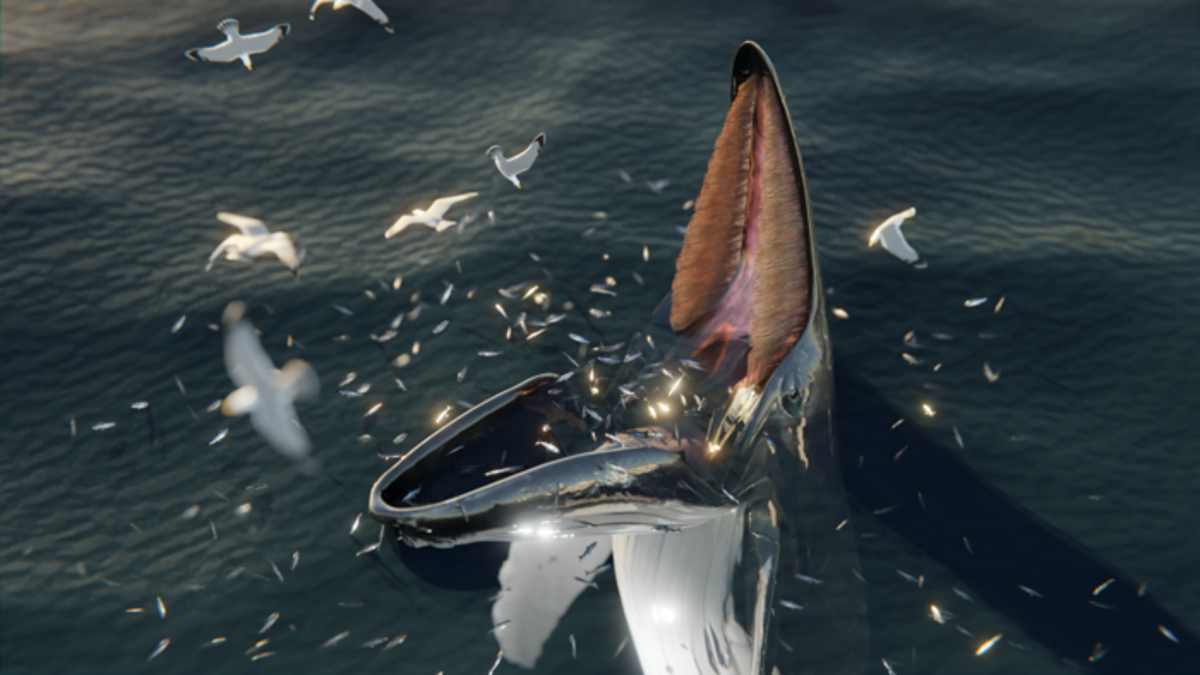
Accounts of a mysterious creature described in manuscripts from the ancient Norse era may have been those of a previously unknown feeding strategy recorded recently in whales, according to a new study.
Researchers, including those from Flinders University in Australia, believe misunderstandings of these accounts from 2,000 years ago may have contributed to myths about medieval sea monsters.
The Old Norse manuscripts, detailed in the new study published on Tuesday in the journal Marine Mammal Science, described the creature from the 13th century which was named “hafgufa”.
Whales are known to lunge at their prey when feeding, but recent observations of the marine mammals have revealed that they also feed by rising to the surface of the water, with their jaws open at the right angles, waiting for shoals of fish to swim into their mouths.
This strategy works for these large marine mammals as fish think they have found a place to shelter from predators, while not realising they are swimming into danger.
A video captured of the whale feeding frenzy had gone viral on Instagram in 2021.
While this feeding strategy only recently came to light a few years ago, researchers noticed intriguing parallels of this behaviour in whales in historical literature while reading about Norse sea monsters.
“It struck me that the Norse description of the hafgufa was very similar to the behaviour shown in videos of trap feeding whales, but I thought it was just an interesting coincidence at first,” study co-author John McCarthy from Flinders University said.
“Once I started looking into it in detail and discussing it with colleagues who specialise in medieval literature, we realised that the oldest versions of these myths do not describe sea monsters at all, but are explicit in describing a type of whale,” Dr McCarthy added.
The “hafgufa” has often been included in accounts along with the more infamous kraken and mermaids, and has remained part of Icelandic myths until the 18th century.
However, researchers said the Norse manuscripts may have drawn on medieval texts that described large numbers of real and fantastical animals with descriptions of a creature very similar to the hafgufa called the “aspidochelone”.
The old texts describe both the hafgufa and aspidochelone as sometimes emitting a special perfume or scent that helps to draw the fish towards their stationary mouths.
This description, scientists said, may have been inspired by the ejection of filtered prey by whales that they do to help attract more prey into their mouth.
“It’s exciting because the question of how long whales have used this technique is key to understanding a range of behavioural and even evolutionary questions,” said Erin Sebo, another author of the study from Flinders University.
“Marine biologists had assumed there was no way of recovering this data but, using medieval manuscripts, we’ve been able to answer some of their questions,” Dr Sebo said.
The more fantastical accounts of the “sea monster” were relatively recent, dating to the 17th and 18th centuries, according to the scientists.
They said there has been a lot of speculation about whether these accounts might have been provoked by natural phenomena like optical illusions or underwater volcanoes.
“The hafgufa tradition can be traced back to the aspidochelone, a type of whale frequently described in medieval bestiaries, first appearing in the Physiologus, a 2nd century CE Alexandrian manuscript,” scientists concluded.
“In fact, the behaviour described in medieval texts, which seemed so unlikely, is simply whale behaviour that we had not observed but medieval and ancient people had,” Dr Sebo added.







